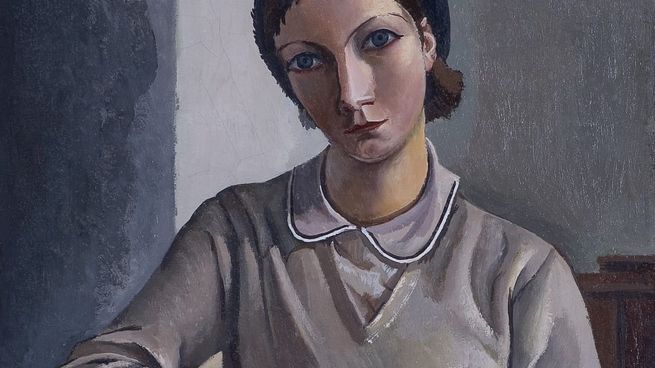The exhibition “Resolutions – 1958-1962” explores the origins and identity of an institution that uses the resources of public law to enhance the benefactor of the State in culture
He National Arts Fund The exhibition presents until mid -June “Resolutions. National Fund of Arts 1958–1962”. Cured by the historian Roberto friendThe exhibition explores the origins and identity of an institution that, from “an extraordinary idea,” uses the resources of public law to enhance the benefactor paper of the State and, thus, finance the support of a federal culture.
The content you want to access is exclusive to subscribers.
The words of artists Norman Brisky, Julio Le Parc, Luis Felipe Noéthe pianist Bruno Gelber and Adolfo Pérez EsquivelThey open the exhibition. His testimonies, recorded for the occasion by the Fund of the Arts, give up the importance of this help to strengthen their trajectories, tour the North Argentina with his works or reach Paris, as LE PARC and Noah. The audiovisual stands out in a archive sample where the visual rigor of the documents and the typed pages prevails and stored in plastic covers for their preservation.


Each page has its charm, each resolution tells a story. There is the one of Alejandra Pizarnikwhich could make a training trip. Perhaps to break with the austerity of the folios, the posterlas, such as a drawing, are handwritten with pencil on the wall. During a guided tour, Roberto friend He points out that the number of artists present is scarce, taking into account that the training and improvement scholarships, subsidies, contributions for workshop assembly and the purchase of materials or musical instruments were numerous during those five years, such as those requested by The Huanca Huá, Mariano Mores, Leda Valladares or María Elena Walsh.
With a loan from the institution, Javier Villafañe bought “The walking”the wagon that toured Argentina and several countries in America presenting a puppet theater, while the book promotion program delivered loans for research, such as those granted to Oscar Masotta and Rodolfo Kuschauthor of “The seduction of barbarism”.
During his investigation, the curator discovered picturesque issues. The request for support to Marta Minujín She is signed by her parents, because she was a minor. Gyula Kosiceasked for a loan to travel and left several works as a payment guarantee, but requested another loan from abroad, because he ran out of money to undertake the return. In the archives of the Columbus theater are the aid to the lyrical singers who were perfected in Europe, such as Victor of Narké.
The cinema was a discipline supported by the background. The exhibition testifies to the patrimonial recovery, support for experimental cinema and figures such as Mario Sábato. “It is a documentary sample that, however, does not talk about the past but is proposed as a living archive: the deployment of a preliminary investigation so that others deepen the role of the fund in the development of Argentine culture,” he explained Friend.
In the room a gigantography of the FNA newsletter is exhibited where they announce the first purchase of a work of art, “Idilio Criollo” of Jean León Pallièrefor the National Museum of Fine Arts. In the period that travels the exhibition, the institution actively intervened in the art market. And as happy examples a beautiful portrait of Spilimbergo And another, to the pencil of Gómez Cornet. The fund created its own collection, but most procurement was destined for provincial museums.
Friend He points out: “There is no provincial museum that has not received or requested, funds for the acquisition of works.” In that same 1958 bulletin, the president’s name is read, Juan Carlos Pinasco and of the Board of Directors of the agency, among others, by Héctor Basaldúa, Juan José Castro, Delia Garcés, Victoria Ocampo and Julio Payró. In the showcases are the programs and publications, and although in those years there was no term “cultural industries”, the idea of promoting a market and presenting books of artists in libraries, reveals the efforts of the institution in that same sense.
Looking in retrospect, the material that for the first time unfolds at the headquarters of Rufino de Elizalde street, transcends the history of the institution, brings to the present the impulse of the developmental policy of Arturo Frondizi and the inheritance that proudly defends itself today in the cultural field of Argentina. “Resolutions …” It is the result of an investigation conducted in the FNA archive and other documentary funds such as the “Mariano Moreno” National Library, the Cultural Center of Cooperation, Intermittencia Design Mendoza, the Magda Frank Museum, the Colón Theater and the Torcuato Di Tella University.
Source: Ambito
I am an author and journalist who has worked in the entertainment industry for over a decade. I currently work as a news editor at a major news website, and my focus is on covering the latest trends in entertainment. I also write occasional pieces for other outlets, and have authored two books about the entertainment industry.



